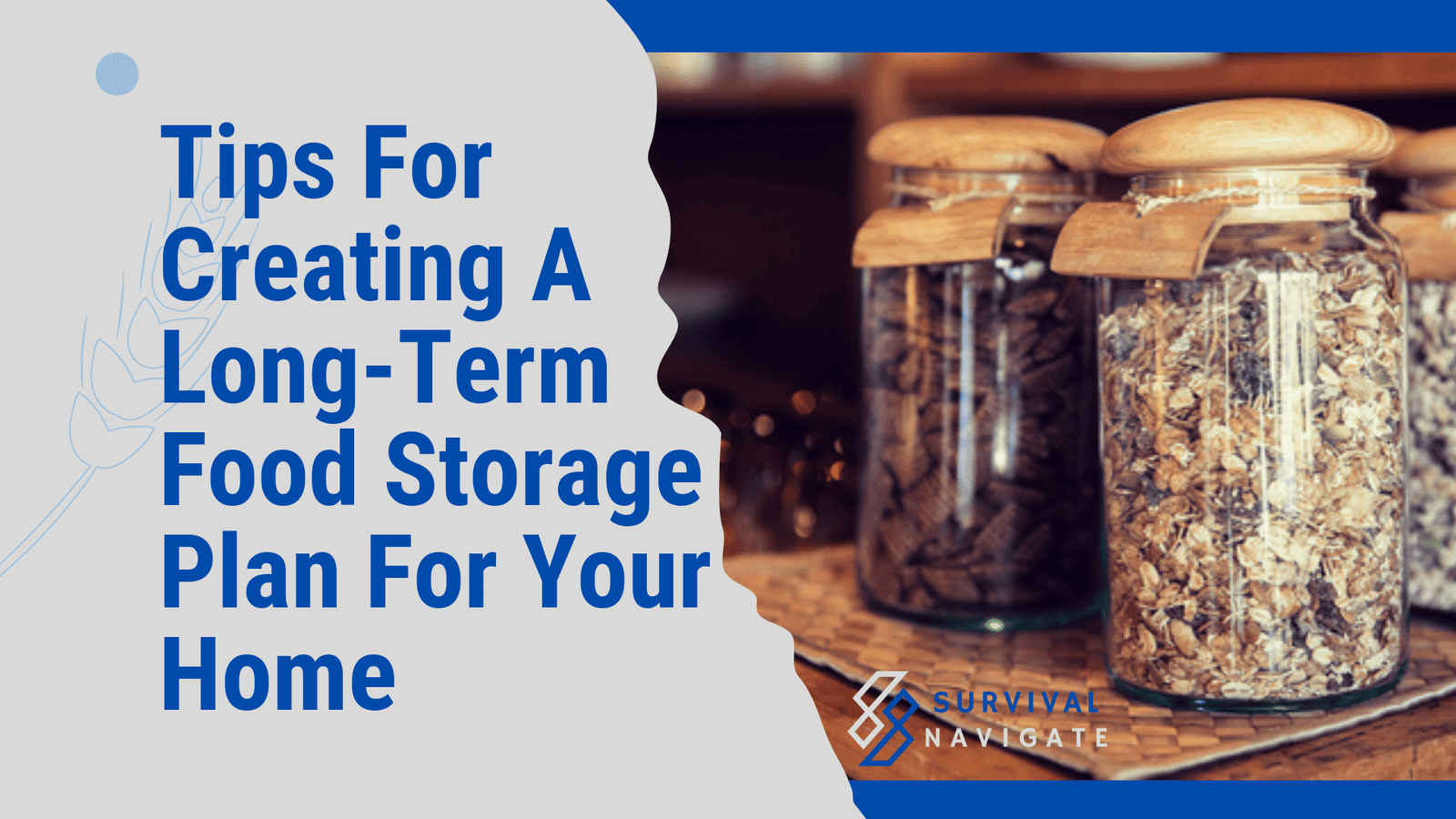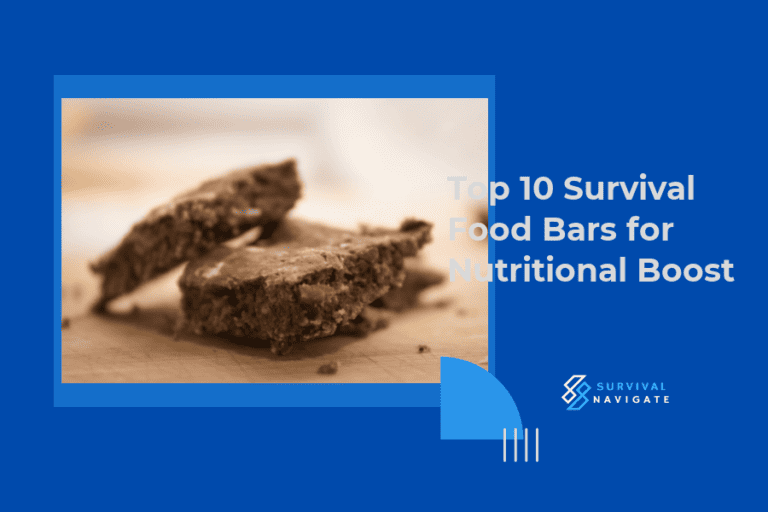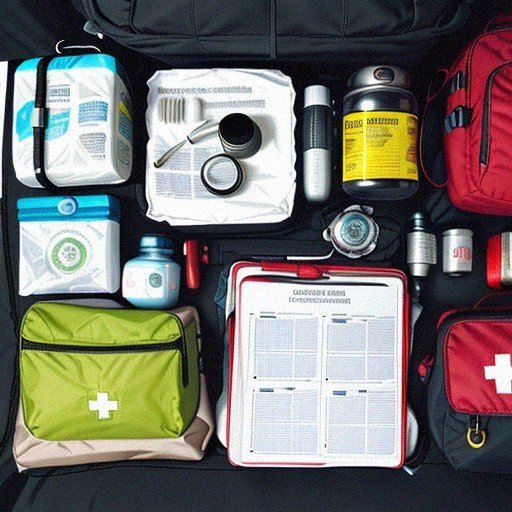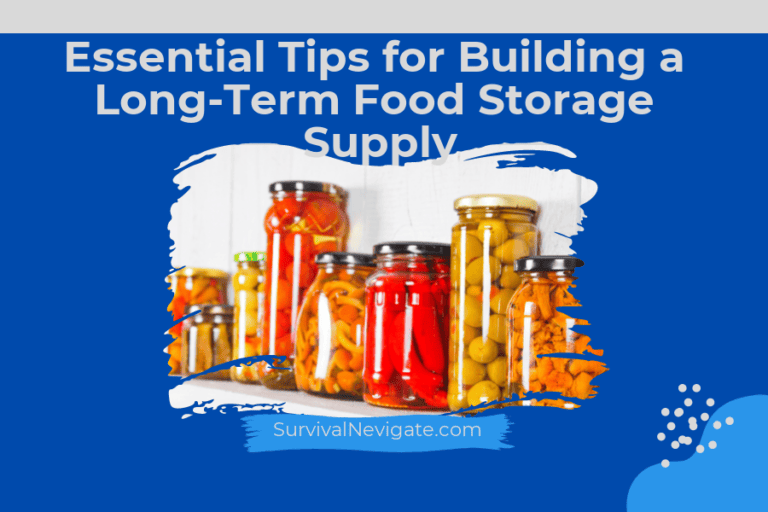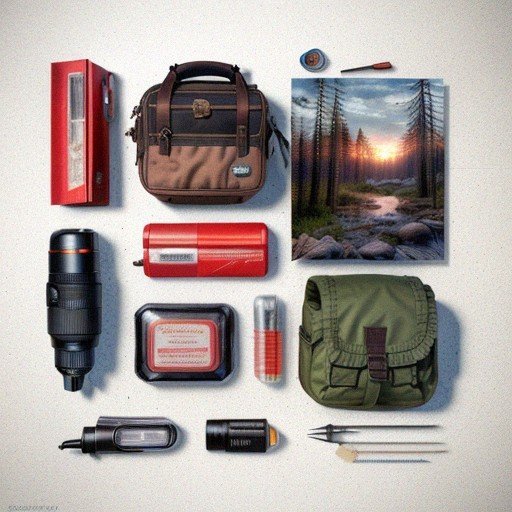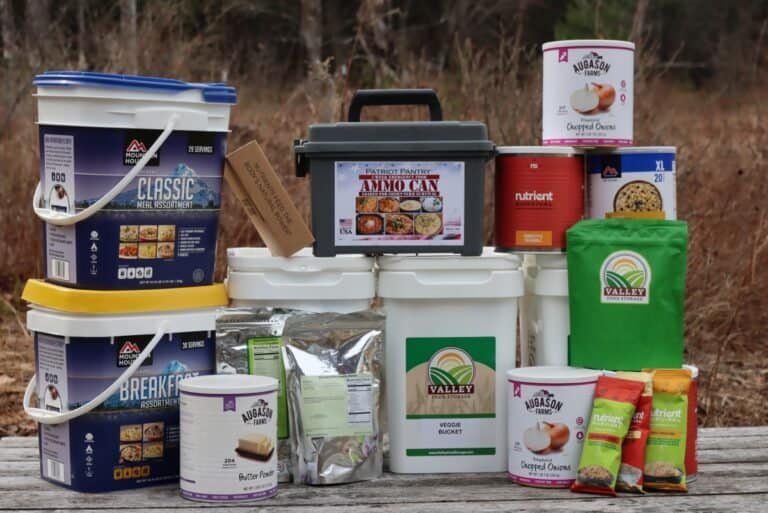Tips for Creating a Long-Term Food Storage Plan for Your Home
When it comes to emergency preparedness, having a long-term food storage plan is essential. By stocking up on staples and non-perishable items, you can ensure that you and your family have a reliable source of food in the event of an emergency.
In this article, we’ll provide tips and advice on creating a long-term food storage plan for your home. We’ll discuss the types of food to store, what to look for when shopping, and the best way to store food for the long term. With these tips, you’ll be better equipped to create a food storage plan that will last for years to come.
Types of Food to Store for Long-Term Use
When it comes to long-term food storage, the most important items to stock up on are staples, non-perishable items, and food with a long shelf life. When shopping for food to store, you should look for items that are high in calories, carbohydrates, and proteins.
Good options include whole grains, dried and canned beans, nuts, seeds, and canned fish. You should also stock up on canned fruits and vegetables, dried fruits, and nuts and seeds.
It’s also important to select foods that won’t go bad quickly or require refrigeration. Good options include shelf-stable milk, freeze-dried fruits and vegetables, honey, and natural sweeteners like maple syrup, stevia, and molasses.
You should also consider stocking up on food items with a longer shelf life, such as rice, pasta, flour, oats, and other grains.
When it comes to storing food for the long term, you should always aim for a cool, dry, dark environment. This helps keep food fresh and prevents spoilage. You should also make sure to rotate your food regularly so that old items are used and replaced with fresh items.
Finally, make sure to keep an inventory of your food storage so you know exactly what you have and when it needs to be used or replaced. With these tips, you’ll be better equipped to create a long-term food storage plan that will last for years to come.
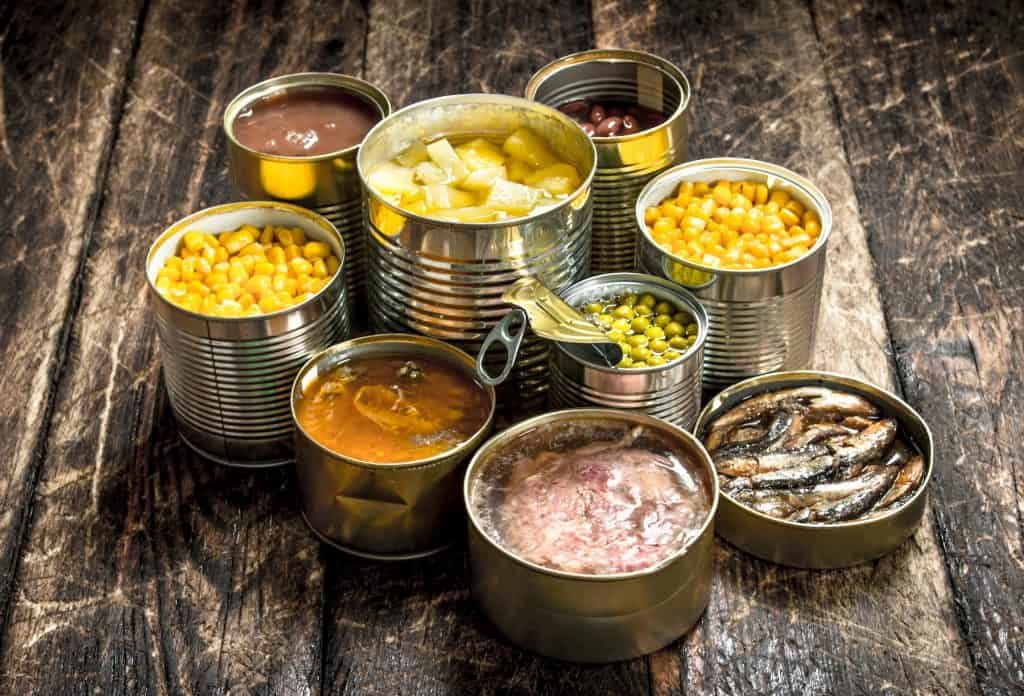
Understanding the Shelf Life of Foods
When making a long-term food storage plan, it’s important to understand the shelf life of the items you are storing. Different foods have different shelf lives, and it’s important to plan accordingly to ensure you don’t waste food.
Generally speaking, non-perishable items such as canned goods, dried beans and grains, and staples like pasta and rice can last for months or even years depending on the item.
For food that has a shorter shelf life, like fresh produce, you should plan to use it in the next few days or up to a week depending on the item. For example, potatoes and onions can last for several weeks in a cool, dark place, while leafy greens should be used in three to five days. It’s important to pay attention to the expiration dates on food packaging and use these foods as soon as possible.
Finally, when storing food, it’s important to maintain the proper conditions. Ideally, food should be stored in a cool, dry place away from direct sunlight and moisture. Storing food in a temperature controlled environment is especially important for perishable items, as they are more likely to spoil quickly. By following these tips, you can ensure that your food storage will last for as long as possible.
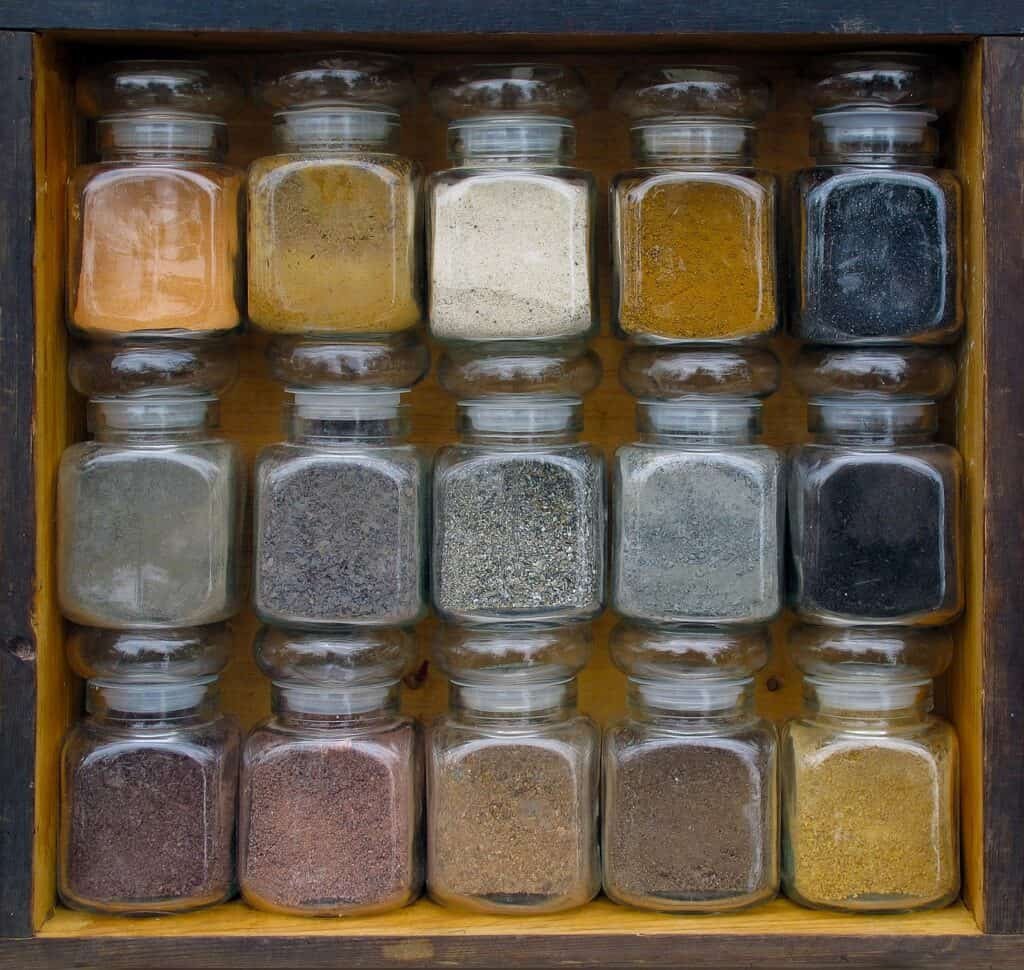
Shopping for Non-Perishable Food Items
When it comes to stocking up on non-perishable food items for long-term storage, there are a few things to keep in mind.
First, try to buy items with a long shelf-life, such as canned and dried foods, grains, and beans. These are all great options, as they usually last for many years when stored properly. Be sure to check the expiration dates on any items you buy and make sure you rotate them as needed.
Another important factor to consider is storage. It’s best to store food in a cool, dry, and dark place, such as a basement or pantry. If you live in a particularly humid or hot climate, you may need to invest in airtight containers or a food grade container to keep food safe and protected. Additionally, be sure to properly store the food in airtight containers so it won’t spoil.
Finally, it’s important to think about the types of foods you are stocking up on. Be sure to opt for nutrient-dense options that are high in vitamins, minerals, and protein, such as nuts and seeds, canned fish, whole grains, and dried fruit. These foods will provide you with the nourishment you need in an emergency.
By following these tips, you can create a long-term food storage plan that will provide you and your family with reliable sustenance in the event of an emergency. With the right supplies and preparation, you can rest assured that you’ll have enough food to get you through any difficult times.
The Benefits of Freeze-Dried and Dehydrated Foods
When it comes to long-term food storage, freeze-dried and dehydrated foods are an excellent option. Freeze-dried and dehydrated food offer several benefits that make them perfect for long-term storage.
For starters, freeze-dried and dehydrated foods retain much of their original nutrition and flavor, making them a great option for stocking your emergency pantry. Additionally, these foods are lightweight and easy to transport, making them ideal for emergency supplies.
Finally, freeze-dried and dehydrated foods can last for up to 25 years when stored properly, making them an excellent choice for long-term food storage.
When shopping for freeze-dried and dehydrated foods, look for products that have been vacuum-sealed and contain minimal additives. This will ensure that the food is as fresh and nutritious as possible. Additionally, when storing foods for long-term use, be sure to keep them in a cool, dry place, such as a basement or root cellar. This will help to preserve the food for years to come.
Overall, freeze-dried and dehydrated foods are a great option for emergency preparedness and long-term storage. Not only do they offer increased nutrition and flavor compared to canned goods, but they also have a much longer shelf life.
With proper storage and preparation, you can ensure that your emergency pantry is stocked with nutritious, delicious food that will last for years to come.
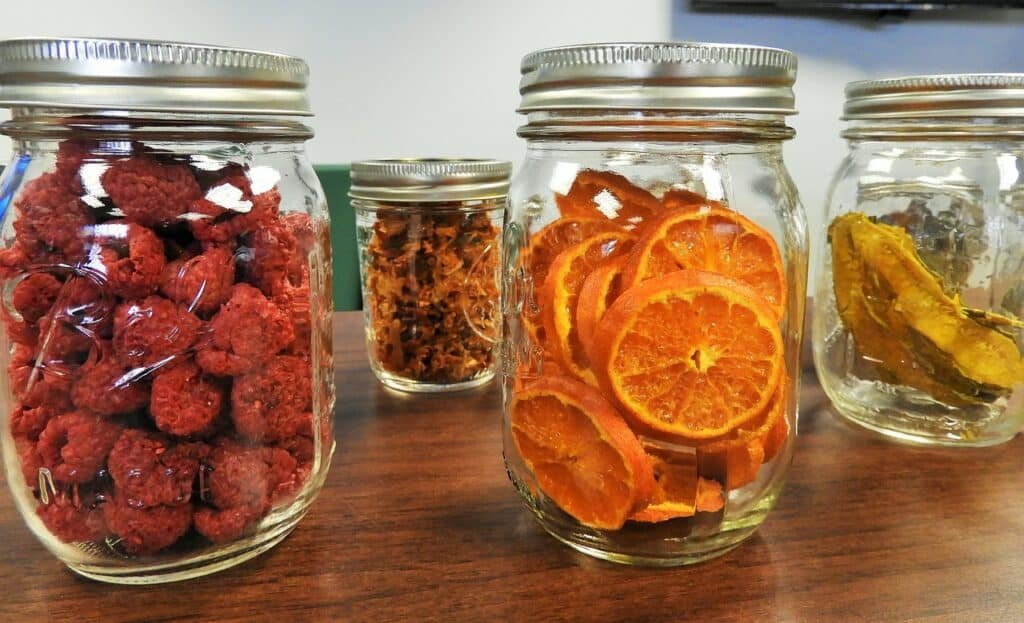
Food Storage Containers and Tools
When it comes to long-term food storage, the right tools and containers are essential. Having the proper containers can keep food fresh and safe for months, or even years. The most important thing to look for when shopping for food storage containers is airtightness and durability. Airtight containers will keep air and moisture out and prevent pests from getting in. Durable containers should be made of food-grade materials like stainless steel and BPA-free plastic.
In addition to containers, there are some other helpful tools to have when it comes to long-term food storage. Canning jars, vacuum sealers, and desiccants can all help to keep food fresh and safe for a longer period of time.
Canning jars are great for storing dry goods like grains and beans, while vacuum sealers are good for sealing in freshness of perishables like vegetables and meats. Desiccants are great for absorbing moisture and preventing mold and mildew growth in containers. With the right tools and containers, you can ensure that your food will be safe and fresh for long-term storage.
Properly Storing Grains and Beans
When it comes to creating an effective long-term food storage plan, grains and beans are an essential part of the mix. Grains and beans are typically inexpensive, shelf-stable, and full of protein and fiber. They also have a long shelf life, which makes them great for stocking up on in preparation for an emergency.
When shopping for grains and beans, it’s important to look for products that are certified organic and free from pesticides and other chemicals. If possible, opt for bulk items, as they will be more economical and easier to store for long periods of time. Once you’ve purchased your grains and beans, store them in airtight containers or jars in a dry, cool place, such as a pantry or basement. If storing for a longer period of time, consider adding oxygen absorbers to the containers to ensure the food stays fresh and safe.
When it comes to properly storing grains and beans, the key is to keep them free from moisture and pests. With a little extra effort and planning, you can ensure that your grains and beans will remain fresh and safe for years to come.
Guidelines for Storing Dairy and Eggs
When it comes to long-term food storage, dairy and eggs should be handled with special care. Dairy products such as milk, cheese, and yogurt are highly perishable and can spoil quickly, so they should be stored in the coldest part of your refrigerator in airtight containers.
Eggs should also be stored in the refrigerator, in the egg carton, and used within three to five weeks. If you plan to store them longer than that, they should be transferred to an airtight container and placed in the freezer.
It’s also important to remember that dairy products and eggs have best-by dates, and should be used before those dates to ensure freshness and safety. When shopping for these items, take a look at the expiration date and buy only what you will use within the recommended time frame. If you need to store any dairy or eggs for longer than the recommended storage time, be sure to clearly label the containers with the date of purchase.
With proper storage, your dairy and eggs can help you create a healthy, balanced long-term food storage plan. By following these guidelines, you can ensure that your family has access to fresh, nutritious foods even in the event of an emergency.
Tips for Storing Fruits and Vegetables
Fruits and vegetables that are stored properly can last for weeks or even months, depending on the type of produce. Here are some tips on how to store fruits and vegetables for the long term:
First, store produce away from direct sunlight. Sunlight can cause the produce to ripen too quickly, leading to spoilage. When shopping, look for produce that is firm, without any soft spots or blemishes.
When storing, place the produce in the crisper bin of your refrigerator, as the humidity and temperature can help preserve the produce. For fruits with a hard skin, such as apples, wrap them in newspaper and store in a cool, dry place. If you’re storing potatoes or onions, keep them in a dark place to help prevent sprouting.
When it comes to freezing fruits and vegetables, properly prepare them first by blanching and cooling. Blanching is the process of quickly immersing the produce in boiling water, then immediately cooling it in an ice bath. This process helps to preserve the nutrients and freshness of the produce. Once blanched, store the produce in airtight containers and place in the freezer. For best results, label each container with the type of produce and the date it was stored.
By following these tips, you can ensure that your fruits and vegetables are stored properly for the long-term. When it comes to emergency preparedness, having a long-term food storage plan is a must. By stocking up on staples and non-perishable items, and learning the best way to store your fruits and vegetables, you’ll be better equipped to create a food storage plan that will last for years to come.
Long-Term Storage of Nuts and Seeds
Nuts and seeds are an excellent addition to any long-term food storage plan. Not only do they provide valuable nutrition, but because of their hard shells and natural oils, nuts and seeds are able to store for long periods of time.
When choosing nuts and seeds for long-term storage, it is important to look for freshness. Unused nuts and seeds can last for as long as two years, while opened packages should be stored for no more than one year.
Nuts and seeds should be stored in airtight containers or sealed bags in a cool, dry place away from direct sunlight. Sunlight can cause the oils in nuts and seeds to go rancid, so make sure to keep them away from windows and other sources of direct light. Additionally, make sure to check the containers regularly for moisture or signs of mold or mildew, as these can cause the nuts and seeds to spoil.
When stored correctly, nuts and seeds can be a great addition to any long-term food storage plan. They are full of protein, vitamins, minerals, and healthy fats, making them a great source of nutrition in any situation. By following these tips, you can ensure that your nuts and seeds will remain fresh and flavor for years to come.
Storing Meats for the Long-Term
When it comes to creating a long-term storage plan for food, the most important items to consider are meats. Meats, such as beef, pork, chicken, and fish, are great sources of protein and other nutrients that can provide sustenance to your family during an emergency. In order to ensure that the meat is safe to eat and lasts for the long-term, there are a few steps that need to be taken.
First, it’s important to purchase the freshest meat possible. When shopping for meat, look for cuts that have been recently packaged and are free of any unusual over-powering odors. Also, check the expiration date on the package and make sure that it is far enough into the future so that you know it will last for the long-term.
Once you have the right type of meat in your hands, it’s important to store it properly. Freezing your meat is the best way to ensure that it stays fresh and safe to eat. Make sure to package the meat correctly, in order to prevent any freezer burn or any other damage that may occur. You can also purchase special vacuum-sealed bags to store the meat in, which will prevent any air from getting in and spoiling the meat.
By following these steps, you can ensure that your meats will remain safe to eat and stay fresh for the long-term. With a long-term storage plan in place, you can have peace of mind that you and your family will have a reliable source of food during an emergency.
Creating a Food Rotation Plan
Creating a food rotation plan is an essential part of long-term food storage. By rotating your food regularly, you can ensure that your food is safe to eat and remains fresh. To construct an effective food rotation plan, there are several key factors to consider.
First, you should make sure that you are purchasing the right types of food for long-term storage. For the most part, you want to focus on non-perishable items that have a long shelf life. Canned goods, grains, and dried fruits are all great choices. You can also store some fresh produce like onions and garlic, but these items need to be rotated out much more frequently.
Once you have purchased your food, you’ll need to decide how you want to store it. If you are storing canned goods, look for a cool, dry place like a pantry or basement for the best results. If you are storing grains, dried fruits, and other items, look for a location with a consistent temperature and moderate humidity. Finally, make sure that you are labeling and organizing your food so that you can easily find what you need.
By following these steps, you can easily create a long-term food storage plan that will keep you and your family well-fed in the event of an emergency. With a little bit of forward planning and careful storage, you can ensure that your food remains safe and tasty for years to come.
Protecting Your Food from Pests
When it comes to protecting your long-term food storage, pests can be a major concern. Whether it’s rodent droppings, insects, or mold, the presence of pests can ruin your food storage plan and put your family’s health at risk. To prevent this from happening, it’s important to take the necessary precautions to protect your food from pests.
One of the most effective methods for controlling pests is to store all of your food in sealed containers. This will prevent rodents and insects from getting inside, while also helping to keep moisture, dust, and dirt out.
Additionally, it’s important to take a proactive approach to pest control. Regularly inspect your pantry and storage areas for signs of pests, and take steps to eliminate them as soon as possible. This could involve using traps, setting up preventative measures such as screens, or calling a professional exterminator.
If you’re looking for an extra layer of protection, there are a variety of products on the market designed to protect your long-term food storage from pests. These products, such as airtight bags and containers, can help to keep pests out and maintain the freshness of your food. L
astly, it’s important to rotate your food items regularly and dispose of any expired items. This will help to reduce the chance of infestation and keep your food storage plan as fresh and safe as possible.
Stocking Up on Essential Supplies
When it comes to stocking up on essential supplies for long-term food storage, the key is to purchase the items that have the longest shelf life. Non-perishable items such as canned goods, grains, flours, and pastas, can be stored for months or even years. It’s important to check the expiration dates on everything you purchase and rotate items as needed. It’s also wise to purchase items in bulk, as this will save money in the long run.
When shopping for items to store, look for items with minimal packaging or those that come in airtight containers. You’ll also want to consider the size of the items you’re purchasing, as it’s important to find items that fit in your storage space.
Additionally, consider purchasing freeze-dried and dehydrated food, as these items can be stored for longer periods of time and require minimal preparation.
Finally, when it comes to storing food for the long term, you’ll want to make sure you have a cool, dry place to store your supplies. It’s important to keep items away from sunlight, moisture, and heat.
Additionally, it’s wise to keep items in airtight containers and check regularly for signs of spoilage. With these tips, you’ll be better equipped to create a food storage plan that will last for years to come.
Making Sure Your Food Storage Plan is Up-to-Date
When creating a long-term food storage plan, it is important to make sure that your plan is up-to-date and reflects current dietary needs. Start by assessing the types of foods that you and your family members currently consume. Do you have any dietary restrictions or allergies that need to be taken into consideration? Make a list of the items you need and the amounts needed so that you know exactly what to stock up on.
Once you have a list of the items to purchase, it is a good idea to check the expiration dates on all of the foods that you purchase. Only buy food that has a long shelf-life, as it is important that your food stores remain safe and edible for the long-term. Additionally, many items may require special storage conditions, such as freezing, to ensure that they stay fresh for the duration. Be sure to research how to properly store each item, as improper storage can lead to spoilage and food waste.
It is also important to periodically rotate your food storage, especially items like grains, legumes, and nuts, which can go rancid over time. Making sure that your food storage plan is up-to-date and includes everything you need will help you stay prepared and safe in the event of an emergency. With a little bit of planning and preparation, you can make sure that you and your family have access to the food and supplies needed to get through any situation.
Conclusion
In conclusion, having a reliable long-term food storage plan is essential for any emergency preparedness plan. By choosing the right types of food, shopping for items with a long shelf life, and properly storing food for the long-term, you can ensure that your family has access to the nutrition they need in the event of an emergency. With the right approach, you can create a food storage plan that will help you and your family stay well-fed long-term.

